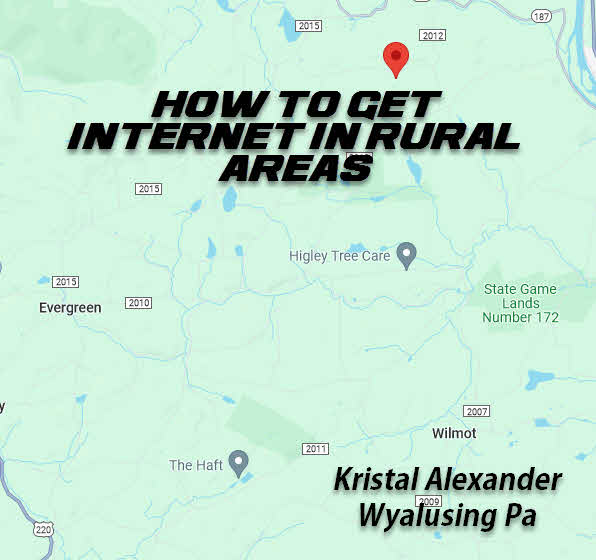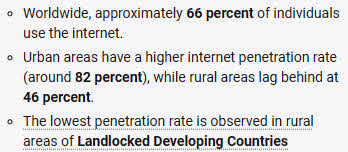The Ultimate Guide to Getting Internet in Rural Areas: The Best Rural Broadband Options & Solutions

Postal Address, State, Zip, and Contact Phone Number.) My email: kristal@coachkristal.com
- Navigating the Digital Terrain – Pros and Cons of Internet Options in the Countryside
- Enhancing Your Digital Experience – Tips for Boosting Internet Speed in Rural Settings
- Uniting for Connectivity – The Power of Community and Government in Expanding Rural Internet Access
In today’s fast-paced digital world, the power of the internet is not just a luxury, but a necessity for connecting, learning, and thriving! However, for many living in rural areas, this tool remains just out of reach. The challenge of securing reliable internet access in remote locations is more than a mere inconvenience; it’s a barrier to unlocking life’s full potential.
We dive into the heart of rural internet access, exploring the various broadband options and wifi solutions that promise to bridge this digital divide.
We’ll navigate through the best internet options tailored for rural landscapes, ensuring that no matter where you are, you’re always connected.
Whether you’re nestled in the serene countryside or living off the beaten path, join us in exploring how to empower your connectivity and bring the world to your doorstep.
Navigating the Digital Terrain – Pros and Cons of Internet Options in the Countryside
Living in the countryside offers a serene escape from the hustle and bustle of city life, but when it comes to internet connectivity, it can feel like being a world away. Let’s explore the various rural internet options available, weighing the pros and cons of each to help you find the best fit for your remote area wifi needs.
- Satellite Internet: A popular choice for those in remote locations.
- Pros: Satellite internet provides widespread coverage, reaching areas where other options can’t. It’s relatively easy to set up with a satellite dish.
- Cons: The downside includes higher latency, which can affect real-time online activities. Weather conditions can also impact the connection quality.
- Fixed Wireless Internet: This option involves a small antenna installed at your home, receiving signals from a nearby wireless base station.
- Pros: Fixed wireless offers lower latency than satellite and can provide higher speeds. It’s a solid choice for moderately remote areas.
- Cons: Its effectiveness diminishes in hilly or heavily forested areas due to signal obstructions.
- Mobile Hotspots: Leveraging cellular networks, mobile hotspots offer a flexible solution.
- Pros: They’re portable and easy to set up. Ideal for those who travel frequently within areas with good cellular coverage.
- Cons: Data caps can be restrictive, and speeds may vary based on location and network congestion.
- DSL (Digital Subscriber Line): Utilizes existing telephone lines for internet.
- Pros: DSL is widely available and offers a dedicated line, meaning your speed isn’t affected by neighbors’ usage.
- Cons: The speed is often slower compared to other options and decreases with distance from the provider’s hub.
- Fiber Optic Internet: Though not widely available in rural areas, it’s worth considering if accessible.
- Pros: Offers the fastest speeds and reliable service with low latency.
- Cons: The major drawback is its limited availability in remote locations.
Each of these options has its unique strengths and limitations. Your choice will depend on factors like your location, internet usage needs, and budget.

Enhancing Your Digital Experience – Tips for Boosting Internet Speed in Rural Settings
Living in a rural area doesn’t mean you have to settle for a sluggish internet connection. While the options for high-speed internet might be limited, there are several strategies you can employ to improve your rural internet speed and optimize your broadband connection. Let’s explore some practical tips to boost your countryside wifi signal and overcome the common challenges of internet connectivity in remote areas.
- Upgrade Your Equipment: Sometimes, the key to better internet speed lies in your own hardware.
- Tip: Invest in a high-quality router and consider a modem upgrade if you’re using an older model. Modern routers offer better range and faster speeds.
- Use a Wi-Fi Extender or Booster: Enhance the strength and reach of your Wi-Fi signal.
- Tip: Place the extender strategically to maximize coverage, especially in areas where the signal is weak.
- Optimize Router Placement: The location of your router can significantly impact your internet speed.
- Tip: Position your router in a central location, away from walls, metal objects, and other electronic devices that can interfere with the signal.
- Limit Bandwidth-Heavy Activities: Be mindful of activities that consume a lot of bandwidth.
- Tip: Schedule downloads and updates for off-peak hours and stream videos in lower resolution to ease the load on your connection.
- Secure Your Wi-Fi Network: An unsecured network can be slow due to unauthorized access.
- Tip: Use a strong password and consider hiding your network SSID to prevent others from using your Wi-Fi without permission.
- Regularly Update Firmware: Keep your router’s firmware up to date for optimal performance.
- Tip: Check for updates regularly or enable automatic updates if your router supports it.
- Consider a Wired Connection: For activities requiring stable connectivity, like video conferencing or gaming, a wired connection can be more reliable than Wi-Fi.
- Tip: Use an Ethernet cable to connect your device directly to the router.
- Contact Your ISP for a Line Check: Sometimes, the issue might be with your service provider.
- Tip: If you’ve tried everything and your internet is still slow, ask your ISP to check the line for any issues.
By implementing these tips, you can significantly improve your internet experience in rural settings. While you may not have access to urban-level speeds, optimizing your current setup can make a world of difference in enhancing your connectivity.
Uniting for Connectivity – The Power of Community and Government in Expanding Rural Internet Access
In the quest to bridge the digital divide, community efforts, and government initiatives play a pivotal role in expanding internet access in rural regions. These collaborative endeavors are not just about bringing technology to remote areas; they’re about empowering communities and fostering growth.
Let’s delve into how these collective actions are making a significant impact on the internet in rural areas.
- Government Broadband Initiatives: Governments worldwide are recognizing the importance of internet connectivity as a basic utility and are launching initiatives to support rural broadband expansion.
- Highlight: Programs often involve funding and subsidies to encourage internet service providers (ISPs) to extend their services to underserved areas. These initiatives also focus on laying down the necessary infrastructure, like fiber-optic cables, to facilitate high-speed internet.
- Community-Led Wi-Fi Projects: In many rural areas, local communities are taking matters into their own hands by setting up community-driven Wi-Fi networks.
- Highlight: These projects involve local volunteers and organizations working together to create a network that provides internet access to the entire community. They often use innovative solutions like mesh networks to overcome geographical challenges.
- Public-Private Partnerships: Collaboration between the government and private sector is crucial in addressing the connectivity needs of rural areas.
- Highlight: These partnerships leverage the strengths of both sectors – the resources and policy influence of the government, and the technical expertise and innovation of private companies.
- Educational and Healthcare Initiatives: Special focus is given to connecting educational and healthcare institutions in rural areas to ensure residents have access to essential services.
- Highlight: Programs like telemedicine and online education platforms are becoming increasingly accessible in remote areas, thanks to improved internet connectivity.
- Grassroots Advocacy and Awareness: Raising awareness about the importance of rural internet access is key to gaining support and momentum for these initiatives.
- Highlight: Community leaders, activists, and local organizations play a vital role in advocating for better connectivity and educating residents about the benefits of internet access.
Through these collaborative efforts, rural broadband initiatives are not just connecting remote areas to the internet; they are fostering a sense of community, supporting local economies, and ensuring that residents in rural regions are not left behind in our increasingly digital world.

My name is Kristal. Since 2008, I’ve been harnessing the power of the internet to earn a living at home and on the go.
As someone in my 50s, I blend experience with modern digital strategies to excel in my ventures.
Currently, I’m involved with a global platform that specializes in guiding individuals toward lucrative income opportunities.
.. Like online Jobs and or product testing/reviewing:
They help businesses connect with consumers
so you can get paid testing products, playing games
and completing surveys/reviews!
Have you ever heard of doing a job one time and
then getting paid over and over and over again?
That’s my favorite option!
Related:
Cut your costs on everything from Apple products to zucchini … and make money with side hustles, remote jobs, and so much more: SWB